
Sukhothai is a small city in Lower Northern Thailand, most famous for the ruins of the ancient city Sukhothai. The name translates as "the dawn of happiness". The province is located on the lower edge of the northern region, 427 kilometres north of Bangkok, and covers some 6,596 square kilometres.

The city is a popular tourist destination because it is located near the ruins of the ancient city of Sukhothai, which was the Thai capital during the 13th Century C.E. The historical Sukhothai was the first capital of Siam founded by King Ramkhamhaeng. The province's temples and monuments have been restored and Sukhothai Historical Park is an area with numerous sites of historical interest which has been designated a UNESCO World Heritage Site. Other interesting places include Ramkhamhaeng National Museum, Ramkhamhaeng National Park, Sri Satchanalai National Park, and The Royal Palace and Wat Mahathat.
CLIMATE
The best time of the year to see Sukhothai is from November to February when the weather is cooler. Other than that you can go any time of the year.
GET AROUND
The purple #1 songthaew travels to and from the bus station, which is about 3 km out of town. They run the length of Charodwithitong Rd. The fare is 10 baht.
The large blue songthaew to Old Sukhothai leaves from a bus stop Charodwithitong Rd about 100 m west of the bridge. It stops about 750 m from the entrance to the central zone of the historic park. Fare: 20 baht. Drivers often ask 30 baht from foreigners, but if you insist or start to walk away they should agree for 20
.
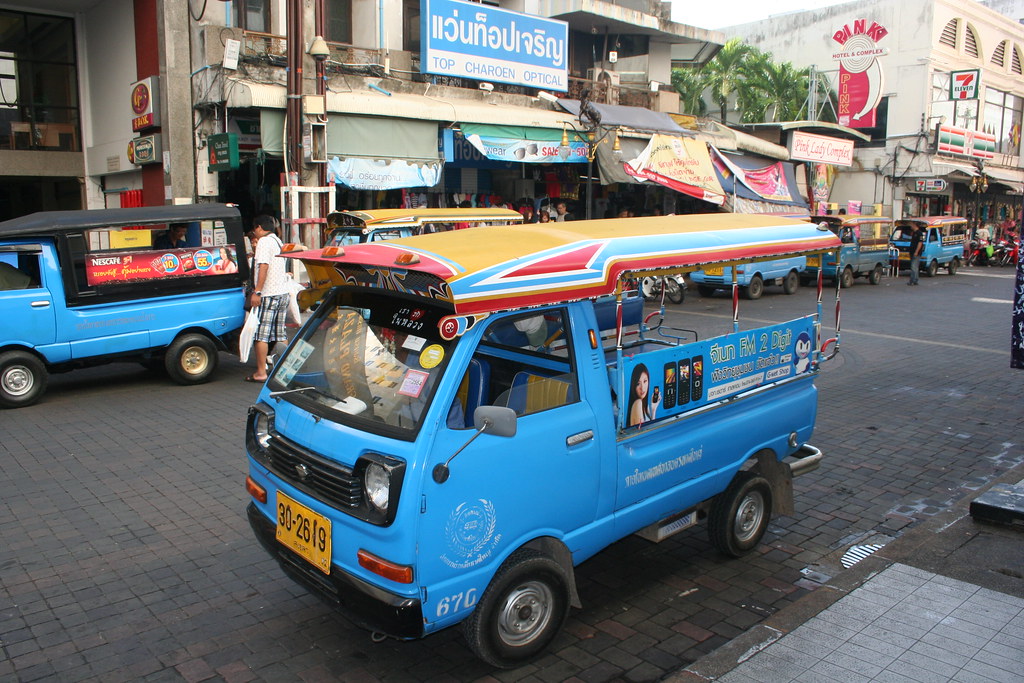
.

There are also tuk-tuks, which will try to get 600 baht out of you for a trip to the Old City (main ruins) some 15 km out of town. The correct price is about 300 baht, and this is for at least a couple of hours. When you have seen the part you are at and want to move further in the same area, the driver takes you there. In Feb 2012, Reports are that 600 baht is a fair price for a day.
PLACE OF INTEREST
Old Sukhothai (Sukhothai Muang Kao): Located 12 km to the west of today's Sukhothai, this was the capital of the Sukhothai Kingdom from 1238 to 1438 and contains many ruins from that period. Its importance has been internationally recognised and it is now a UNESCO World Heritage Site. The best way to see the ruins in the Sukhothai National Historic Park is by bicycle. These can be rented from a shop opposite from the main park entrance. It is feasible to walk around the central and northern zones in 6 hours or so.
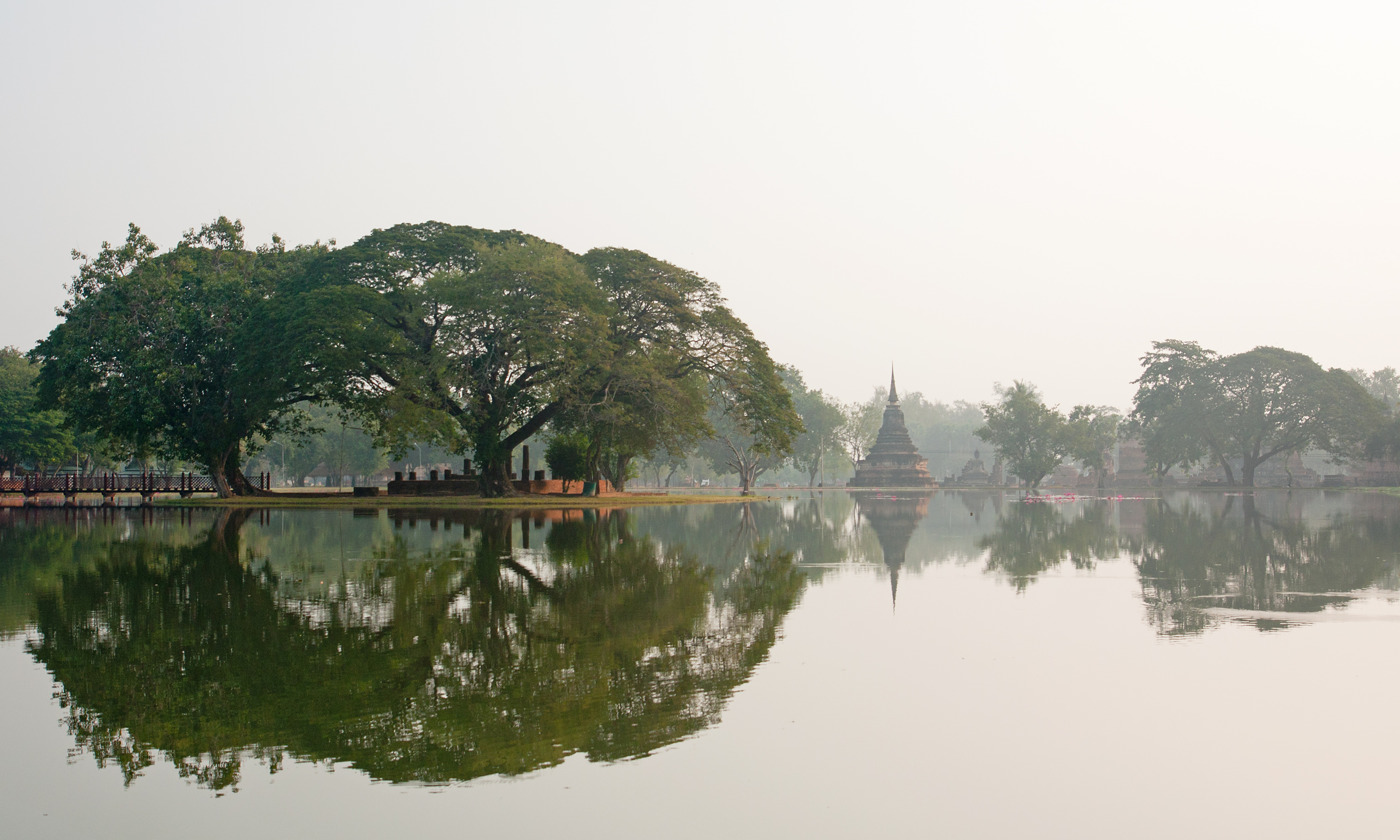

The best time to see the ruins is mornings when it's a little cooler and before the buses arrive, at noon when they have lunch, or after 16:00. The site covers an area of approximately 70 square kilometres (~27 square miles) and is divided into multiple zones. Every zone, of course, has an entrance fee. Admission to each of the zones is 100 baht for foreigners and 20 baht for Thais. Extra for vehicles, including bicycles (10 baht). The combined ticket (still found in most travel guides) does not exist anymore. Before paying the fee, be sure to check all gates. Not every gate is always guarded, especially after 16:00. The central zone contains the majority of the ruins and a museum. Maps are free at the ticket office. Open from 06:00 to 18:00.
Central zone - It contains 11 ruins in 3 square kilometres, interspersed with moats, lakes and bridges to some island-bound ruins. Mat Mahathat is one of the most spectacular with a large seated Buddha figure set amongst the pillars of a now ruined sala, and a central chedi flanked by two standing Buddha figures. Wat Sra Sri also has a large chedi and Buddha figure, but is reached by a bridge to the island. There are some nice views from the other side of the lake.


North zone - Wat Phra Phai Luang contains the remains of a number of buildings plus a large prang with stucco reliefs. More impressive is Wat Sri Chum, which contains a massive seated Buddha figure peering through an opening in its enclosure. Look for a stairway on the left as you enter the enclosure; it leads up and behind the Buddha image, though the passage is not always open.


Nai Bang Area: Nai Bang is an alluvial plain around the mouth of the Tapi River which is crisscrossed with networks of canals. The canals are lined with mangrove forest alternating with traditional southern-styled houses, behind which are coconut farms and orchards.


Khao Tha Phet Nature and Wildlife Study Centre: This centre is located on a hill called Khao Tha Phet. The hilltop offers commanding panoramic views of Surat Thani town and the Tapi River.
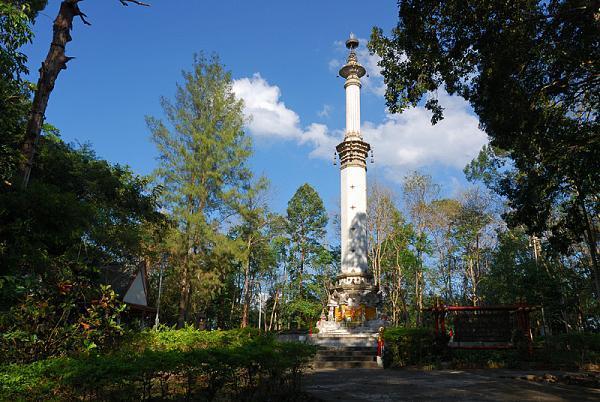

Phrathat Si Surat's a candle-like stupa on the hill, contains Lord Buddha's relics donated by the Indian government.

Monkey Schools: In the southern provinces, monkeys work for humans in the harvesting of coconuts. Expert climbers, they show quick skills that are a boon to farmers.


Oyster Farm: Surat Thani people take so much pride in their big and delicious oysters that they have become a part of the province's motto. Most oysters are raised around the mouth of Kradae and Than Thong canals.


Ban Khlong Sai Monkey Training Centre: Located in front of Wat Ampharam, Mu 3, Tambon Khlong Sai, Amphoe Tha Chang, the centre trains monkeys to pick up coconuts.


Wat Suan Mokkhaphalaram: Suan Mokkh's founder, the late Buddhadasa Bhikkhu, was highly respected both locally and internationally. His 'back to basics' form of Buddhism, mirroring that led by the Buddha's earliest disciples more than 2,500 years ago, attracted many Buddhist monks and lay meditators from many countries.


Phra Borommathat Chaiya: Constructed along Mahayana Buddhist's beliefs of the 7th Century, the great chedi is reputedly the best preserved Srivijaya artwork in Thailand. The stone chedi has 3 receding tiers, each of which are decorated with small stupas. The Buddha's relics are enshrined inside the chedi.


Wat Wiang, Wat Kaeo and Wat Long: These 3 temples are supposedly contemporaries of Wat Phra Borommathat Chaiya. The seated Buddha statue protected by naga, made in 1183, and a sand stone, Chaiya-styled, Buddha statue were found at Wat Wiang. Wat Kaeo and Wat Long have Chaiya-styled brick chedi on indented square bases.


Phumriang Village: This Muslim fishing village is famed for its hand-woven silk cloth in red, yellow and black. Buddhist Thais in the village weave hats from leaves.


Namtok Vibhavadi: The petite waterfall enjoys bucolic surroundings and attracts a lot of local people during weekends.


Wat Khao Suwan Pradit: This temple was founded by Luang Pho Choi, one of southern Thailand's most revered Buddhist ecclesiastics. The hilltop 45-metre pagoda contains Buddha relics and commands striking coastal views of Ban Don District.
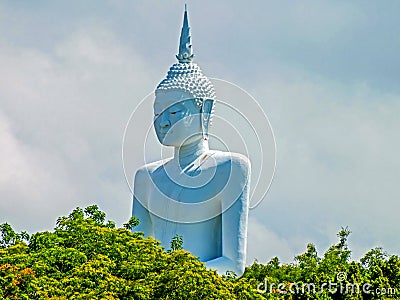

Rock Fish Museum: This museum was established in 1992 by Mr. Kitti Sin-udom, an old fisherman who spent more than 10 years in stone carving work. More than 1,000 lifelike sculptures of marine fish found in the gulf of Thailand are on display.


Khao Sok National Park: As part of the largest moist evergreen forest in Southern Thailand, the park is rich with diverse flora including certain families of lotus, white palm, and fern. Khao Sok is also one of the best bird-watching spots in Thailand. Attractions in the park include:
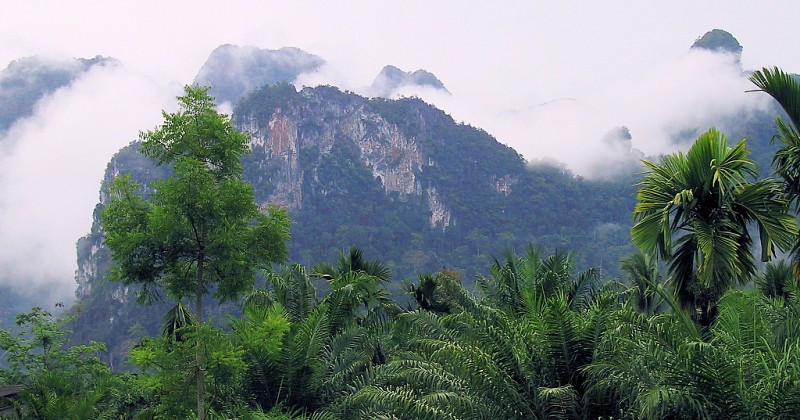

• Ratchaprapha (Rajjaprabha) Dam - The complete of this dam in 1988 gave birth to a huge inland lake of about 168 square kilometres, which is adorned with hundreds of islands and islets
• Tham Nam Thalu – Much preparation is needed to visit this cave, as the trail is rather physically demanding.
• Tang Nam – Streams chiseled across 2 ridges to create this striking gorge. Many people came to pay respect to this place, around which the venerable Buddhadasa Bhikkhu's ashes were traditionally showered.
• Namtok Than Sawan – This scenic waterfall is 3 kilometres from Tang Nam.
• Namtok Sip Et Chan – This 11-leveled waterfall originates from Bang Len canal. The first level is largest and most picturesque.
• San Yang Roi Trail – This 2-kilometre trail begins at the park headquarters and runs along the mountain shoulder past streams, waterfalls and moist evergreen forest. A trail to a rarely seen plant called Bua Phut at Bang Luk Chang Mountain.
Khlong Phanom National Park: Comprises high limestone mountains connected with Khao Sok National Park. Attractions in the park include Kiriwong and Chong Yung waterfalls and several caves full of stalactites and stalagmites.


Kaeng Krung National Park: Its mountainous area is covered by fertile moist evergreen forests, where some rare and endangered species such as tree-ferns can be found. Attractions in the park include hot springs, Bang Hoi Waterfall and Khlong Pa Waterfall.
Tai Rom Yen National Park: The 425 - square kilometre - forest areas in Kanchanadit, Ban Na San and Wiang Sa were designated National Park in 1991. The diluting mountains of the Nakhon Si Thammarat Range are mostly covered with moist evergreen forest and exotic and rare flora and fauna. Attractions in the park include:


• Namtok Tat Fa – The perennial 13-leveled waterfall is highest in Surat Thani. The 4th level is most attractive with its 80 metres high cliff.
• Tham Khamin or Tham Men – Exotic stalagmites and stalactites can be admired in this cave. The walkway is well lit and fit with stairs when needed, to ensure maximum safety.
• San Yen – The eastern range, about 40 kilometres long and 1,000-1,300 metres high is fertile with rare flora, fauna and wildlife.
• Namtok Mueang Thuat – The 7-leveled waterfall has a large basin.
ACTIVITIES
• Rent a bike and explore the ruins of Old Sukhothai (walking will kill you). Several rental shops.
• Explore by tuktuk the old city of Sukhothai. Especially Suitable on warm days.
• Visit the park at sunrise and admire the Buddha figures in the orange glow of the morning sun.
• Pay a visit to the ruins at Si Satchanalai Historic Park, 55 km from new Sukhothai. Few tourists, great sites, quiet. Bike rental at entrance.

• Walk around the fresh market in new Sukhothai in the early morning. Try the tastes of many kinds of local food Sukhothai people like to eat, e.g., sticky rice with deep fried pork, sweet deep fried beef or spicy pork salad wrapped in a banana leaf.
• Rent a motorbike in new Sukhothai and appreciate the local life-style.
• Have "Sukhothai" Noodles!! - It's a must!
THINGS TO BUY
In Sukhothai Historical Park
• A Buddha figure at the market at the historical park. They are available in all historic styles, sizes and materials. It's forbidden to export Buddha figures from Thailand, even though it is commonly done.

In New Sukhothai
• Thongchai Wittayu: The biggest electronic store in Sukhothai. The products are digital cameras, memory cards, MP3 players, etc. You could ask around when you are hanging out in new Sukhothai, most people know the store.
0 nhận xét:
Đăng nhận xét